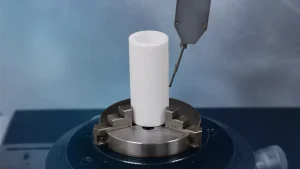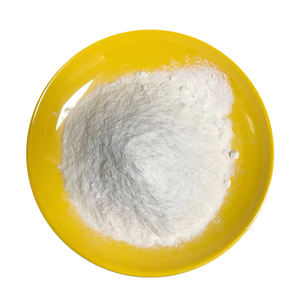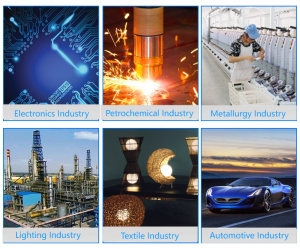Professional industry ceramic supplier, silicon nitride, silicon carbide, aluminum nitride and any other kinds of ceramics.
1. Introduction
Just 24 hours ago, a major foundry in Ohio reported a production delay due to repeated silicon carbide crucible failures during aluminum melting—a problem echoed across metalcasting forums this week. The culprit? Improper preheating and rapid temperature changes. If you’re using a silicon carbide crucible in your lab, workshop, or industrial setting, knowing how to care for it can save time, money, and materials.
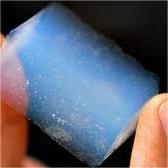
Silicon carbide crucibles are prized for their high thermal conductivity, excellent resistance to thermal shock, and durability at extreme temperatures—often exceeding 1,600°C (2,912°F). But even the toughest advanced ceramic can fail if mishandled. This guide walks you through proven steps to prevent cracking, extend service life, and troubleshoot common issues.
2. Understand Your Crucible Material
Not all crucibles are created equal. While zirconia crucibles offer higher purity for sensitive melts, they’re more brittle. Alumina (Al2O3) crucibles are cost-effective but less conductive. In contrast, a silicon carbide crucible strikes a balance between strength, thermal shock resistance, and heat transfer—ideal for melting non-ferrous metals like aluminum, copper, and brass.
It’s also worth noting the difference between boron carbide vs silicon carbide. Boron carbide is harder and used in armor or abrasives, but it’s far more expensive and less thermally conductive. For most high-temp melting applications, silicon carbide remains the go-to choice among advanced ceramics.
3. Step-by-Step: Proper Preheating Protocol
Thermal shock is the #1 cause of silicon carbide crucible failure. Always preheat slowly before full operation.

- Start at 150–200°C (300–400°F) for 30 minutes to drive off moisture.
- Gradually increase to 600–800°C (1,112–1,472°F) over 1–2 hours.
- Only then ramp up to your target melting temperature.
Never place a cold crucible directly into a hot furnace or pour molten metal into a room-temperature crucible. Even high-quality rbsic silicon carbide tile block-based crucibles can crack under sudden stress.
4. Avoid Common Handling Mistakes
Silicon carbide is strong but not indestructible. Dropping, striking with metal tools, or uneven loading can create microfractures that worsen with heat cycles.
- Use ceramic or graphite tongs—not steel—to handle the crucible.
- Never scrape residue aggressively; instead, use a soft brush after cooling.
- Store in a dry place to prevent moisture absorption, which expands during heating and causes spalling.
Also, ensure your furnace has proper support. A poorly seated crucible can warp or crack. Consider pairing it with a silicon nitride ring or custom silicon nitride heat shield for better alignment and insulation.
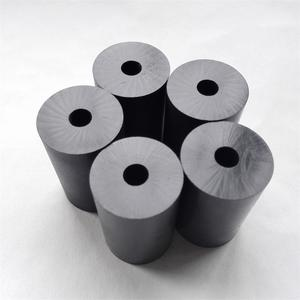
5. Cleaning and Maintenance Between Uses
Residue buildup insulates the crucible wall, leading to uneven heating and stress cracks. Clean after every use:
- Allow the crucible to cool completely to room temperature.
- Remove solidified slag gently with a wooden or plastic scraper.
- For stubborn deposits, perform a controlled burnout at 800°C in an oxidizing atmosphere (if compatible with your material).
Avoid water quenching or chemical cleaners—they can degrade the silicon carbide matrix over time. Unlike silicon carbide ceramic dinner plates or baking dishes designed for kitchen use, industrial crucibles aren’t meant for dishwashers or acidic soaks.
6. When to Replace Your Crucible
Even with perfect care, all crucibles wear out. Watch for these signs:
- Visible cracks or flaking interior walls
- Warping or deformation
- Slower heat-up times (indicating reduced thermal conductivity)
- Increased contamination in melts
Don’t push a damaged crucible—it risks catastrophic failure. If you frequently melt reactive alloys, consider upgrading to a silicon nitride crucible from a reputable silicon nitride crucible factory for enhanced chemical inertness.
7. Pairing with Compatible Advanced Ceramic Components
Your crucible doesn’t work alone. Use compatible parts to maximize performance:
- Silicon carbide burner nozzles and silicon carbide brick linings help maintain uniform furnace temps.
- Silicon carbide ceramic tubes or silicon carbide thermocouple protection tubes should match your crucible’s thermal expansion profile.
- For structural support, rbsic ceramic pillar price may vary, but quality pillars prevent tilting and stress.
Avoid mixing materials with vastly different expansion rates—like pairing a silicon carbide crucible with a zirconia rod—unless engineered specifically for compatibility.
8. Conclusion
A silicon carbide crucible is a powerful tool—but only if treated right. By following slow preheating, gentle handling, proper cleaning, and timely replacement, you’ll avoid the most common pitfalls that lead to cracking and downtime. Whether you’re in a small lab or large foundry, respecting the limits of this advanced ceramic ensures safety, efficiency, and longevity.
Our Website founded on October 17, 2012, is a high-tech enterprise committed to the research and development, production, processing, sales and technical services of ceramic relative materials such as How. Our products includes but not limited to Boron Carbide Ceramic Products, Boron Nitride Ceramic Products, Silicon Carbide Ceramic Products, Silicon Nitride Ceramic Products, Zirconium Dioxide Ceramic Products, etc. If you are interested, please feel free to contact us.


